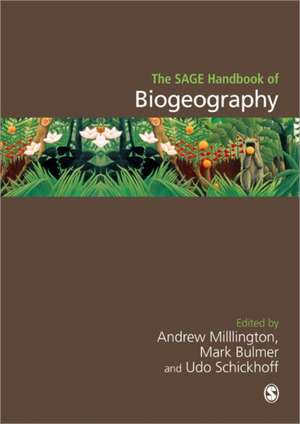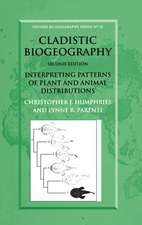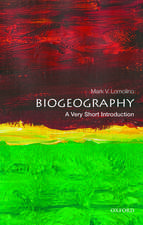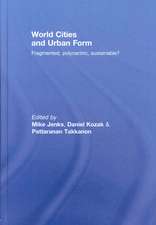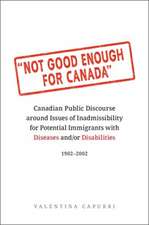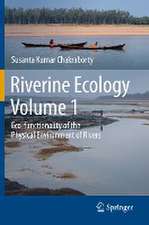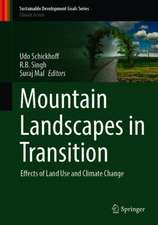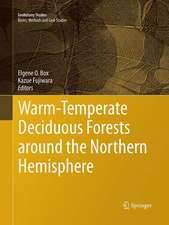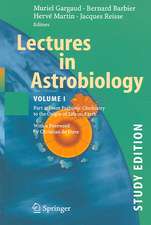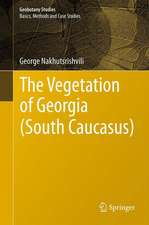The SAGE Handbook of Biogeography
Editat de Andrew C Millington, Mark Blumler, Udo Schickhoffen Limba Engleză Hardback – 21 sep 2011
- Professor Sally Horn, University of Tennessee
"As you browse through this fine book you will be struck by the diverse topics that biogeographers investigate and the many research methods they use.... Biogeography is interdisciplinary, and a commonly-voiced concern is that one biogeographer may not readily understand another's research findings. A handbook like this is important for synthesising, situating, explaining and evaluating a large literature, and pointing the reader to informative publications."
- Geographical Research
"A valuable contribution in both a research and teaching context. If you are biologically trained, it provides an extensive look into the geographical tradition of biogeography, covering some topics that may be less familiar to those with an evolution/ecology background. Alternatively, if you are a geography student, researcher, or lecturer, it will provide a useful reference and will be invaluable to the non-biogeographer who suddenly has the teaching of an introductory biogeography course thrust upon them."
- Adam C. Algar, Frontiers of Biogeography
The SAGE Handbook of Biogeography is a manual for scoping the past, present and future of biogeography that enable readers to consider, where relevant, how similar biogeographical issues are tackled by researchers in different 'schools'. In line with the concept of all SAGE Handbooks, this is a retrospective and prospective overview of biogeography that will:
- Consider the main areas of biogeography researched by geographers
- Detail a global perspective by incorporating the work of different schools of biogeographers
- Ecplore the divergent evolution of biogeography as a discipline and consider how this diversity can be harnessed
- Examine the interdisciplinary debates that biogeographers are contributing to within geography and the biological sciences.
Preț: 1116.97 lei
Preț vechi: 1530.09 lei
-27% Nou
Puncte Express: 1675
Preț estimativ în valută:
213.80€ • 232.31$ • 179.71£
213.80€ • 232.31$ • 179.71£
Carte tipărită la comandă
Livrare economică 21 aprilie-05 mai
Preluare comenzi: 021 569.72.76
Specificații
ISBN-13: 9781412919517
ISBN-10: 1412919517
Pagini: 624
Dimensiuni: 184 x 246 x 45 mm
Greutate: 1.16 kg
Ediția:1
Editura: SAGE Publications
Colecția Sage Publications Ltd
Locul publicării:London, United Kingdom
ISBN-10: 1412919517
Pagini: 624
Dimensiuni: 184 x 246 x 45 mm
Greutate: 1.16 kg
Ediția:1
Editura: SAGE Publications
Colecția Sage Publications Ltd
Locul publicării:London, United Kingdom
Recenzii
This is a valuable addition to the field of Biogeography. The authors investigate Biogeography using a strictly geographical perspective that provides an insightful viewpoint into where Biogeography is focused and uniquely suited in the larger discipline of Geography
Professor Barbara A. Holzman
Department of Geography and Human Environmental Studies, San Francisco State University
A superb resource for understanding the diversity of the modern discipline of biogeography, and its history and future, especially within geography departments. I expect to refer to it often
Professor Sally Horn
Department of Geography, University of Tennessee
As you browse through this fine book you will be struck by the diverse topics that biogeographers investigate and the many research methods they use....Biogeography is interdisciplinary, and a commonly-voiced concern is that one biogeographer may not readily understand another's research findings. A handbook like this is important for synthesising, situating, explaining and evaluating a large literature, and pointing the reader to informative publications
Geographical Research
I think it is a valuable contribution in both a research and teaching context. How it is used will depend on the lineage of biogeography from which you have emerged. If you are biologically trained, then it provides an extensive look into the geographical tradition of biogeography, covering some topics that may be less familiar to those with an evolution/ecology background. Alternatively, if you are a geography student, researcher, or lecturer, it will provide a useful reference and will be invaluable to the non-biogeographer who suddenly has the teaching of an introductory biogeography course thrust upon them.
Adam C. Algar
Frontiers of Biogeography
Professor Barbara A. Holzman
Department of Geography and Human Environmental Studies, San Francisco State University
A superb resource for understanding the diversity of the modern discipline of biogeography, and its history and future, especially within geography departments. I expect to refer to it often
Professor Sally Horn
Department of Geography, University of Tennessee
As you browse through this fine book you will be struck by the diverse topics that biogeographers investigate and the many research methods they use....Biogeography is interdisciplinary, and a commonly-voiced concern is that one biogeographer may not readily understand another's research findings. A handbook like this is important for synthesising, situating, explaining and evaluating a large literature, and pointing the reader to informative publications
Geographical Research
I think it is a valuable contribution in both a research and teaching context. How it is used will depend on the lineage of biogeography from which you have emerged. If you are biologically trained, then it provides an extensive look into the geographical tradition of biogeography, covering some topics that may be less familiar to those with an evolution/ecology background. Alternatively, if you are a geography student, researcher, or lecturer, it will provide a useful reference and will be invaluable to the non-biogeographer who suddenly has the teaching of an introductory biogeography course thrust upon them.
Adam C. Algar
Frontiers of Biogeography
Cuprins
Situating Contemporary Biogeography - Andrew C. Millington, Mark A. Blumler and Udo Schickhoff
PART ONE: REVISITING THEORIES AND CONCEPTS
History of Biogeographical Thought - Mark A. Blumler, Anthony Cole, John Flenley and Udo Schickhoff
Diversity Theories - Duane A. Griffin
Theory in Landscape Ecology and Its Relevance to Biogeography - John A. Kupfer
Classification of Biogeographical and Ecological Phenomena - Angelika Schwabe and Anselm Kratchowil
The Expanding Role of Phylogeography - Brett R. Riddle
The Biogeographic Importance of Pleistocene Refugia - Kathy J. Willis, Shonil A. Bhagwat and Mary E. Edwards
PART TWO: EXPLAINING DISTRIBUTIONS, GRADIENTS AND DISTURBANCES
Biogeographical Distributions: The Role of Past Environments, Physical Factors, and Biotic Interactions - Udo Schickhoff
Biodiversity Gradients - Jens Mutke
Explaining Biogeographical Distributions and Gradients: Floral and Faunal Responses to Natural Disturbances - Anke V. Jentsch and Carl Beierkuhnlein
Fire and Ecosystem Function - Neal J. Enright
Species Response to Contemporary Climate Change - Tim H. Sparks, Annette Menzel, Josep Peñuelas and Piotr Tryjanowski
PART THREE: RECONSIDERING BIOMES AND ECOSYSTEMS
Ecosystem Dynamics of Subpolar and Polar Regions - Ingo Möller and Dietbert Thannheiser
Forest Ecosystem Structure and Disturbance Dynamics Across the Circumboreal Forest - Daneil Kneeshaw, Yves Bergeron and Timo Kuuluvainen
The Ecosystem Dynamics of Tropical Savannas - Jayalaxshmi Mistry
Tropical Forests: Biodiversity and Biogeography - Kenneth R. Young
Dynamics of Mountain Ecosystems - Udo Schickhoff
Biogeography of Agricultural Environments - Chris Stoate
The Biogeography of Built Environments - Clarie Freeman
PART FOUR: UTILIZING MAPPING AND MODELING
Remote Sensing for Mapping Biogeographical Distributions: Actualities and Potentials - Giles M. Foody and Andrew C. Millington
Remote Sensing for Modeling Biogeographic Features and Processes - Joanne M. Nightingale, Stuart R. Phinn and Michael J. Hill
Charaterizing Spatial Pattern in Biogeograhical Data - Thomas P. Albright, Monica G. Turner and Jeffrey Cardille
Predictive Modeling of Biogeographical Phenomena - Niall GT. Burnside and Stephen Waite
Simulation - George P. Malanson
Biocomplexity - Stephen J. Walsh, George P. Malanson, Joseph P. Messina, Daniel G. Brown, and Carlos F. Mena
PART FIVE: LINKING BIOGEOGRAPHY AND SOCIETY
Ethnobotany - Robert Voeks
Invasive Species, in Geographical Perspective - Mark A. Blumler
Bioindicators for Ecological and Environmental Monitoring - Yordan Uzonov
Historical Biogeography as a Basis for the Conservation of Dynamic Ecosystems - Rob Marchant and David M. Taylor
Habitat Approaches to Nature Conservation - Geoffrey Hugh Griffiths and Ioannis Vogiatzakis
Species Approaches to Conservation in Biogeography - Patrick E. Osborne and Pedro J. Leitão
PART ONE: REVISITING THEORIES AND CONCEPTS
History of Biogeographical Thought - Mark A. Blumler, Anthony Cole, John Flenley and Udo Schickhoff
Diversity Theories - Duane A. Griffin
Theory in Landscape Ecology and Its Relevance to Biogeography - John A. Kupfer
Classification of Biogeographical and Ecological Phenomena - Angelika Schwabe and Anselm Kratchowil
The Expanding Role of Phylogeography - Brett R. Riddle
The Biogeographic Importance of Pleistocene Refugia - Kathy J. Willis, Shonil A. Bhagwat and Mary E. Edwards
PART TWO: EXPLAINING DISTRIBUTIONS, GRADIENTS AND DISTURBANCES
Biogeographical Distributions: The Role of Past Environments, Physical Factors, and Biotic Interactions - Udo Schickhoff
Biodiversity Gradients - Jens Mutke
Explaining Biogeographical Distributions and Gradients: Floral and Faunal Responses to Natural Disturbances - Anke V. Jentsch and Carl Beierkuhnlein
Fire and Ecosystem Function - Neal J. Enright
Species Response to Contemporary Climate Change - Tim H. Sparks, Annette Menzel, Josep Peñuelas and Piotr Tryjanowski
PART THREE: RECONSIDERING BIOMES AND ECOSYSTEMS
Ecosystem Dynamics of Subpolar and Polar Regions - Ingo Möller and Dietbert Thannheiser
Forest Ecosystem Structure and Disturbance Dynamics Across the Circumboreal Forest - Daneil Kneeshaw, Yves Bergeron and Timo Kuuluvainen
The Ecosystem Dynamics of Tropical Savannas - Jayalaxshmi Mistry
Tropical Forests: Biodiversity and Biogeography - Kenneth R. Young
Dynamics of Mountain Ecosystems - Udo Schickhoff
Biogeography of Agricultural Environments - Chris Stoate
The Biogeography of Built Environments - Clarie Freeman
PART FOUR: UTILIZING MAPPING AND MODELING
Remote Sensing for Mapping Biogeographical Distributions: Actualities and Potentials - Giles M. Foody and Andrew C. Millington
Remote Sensing for Modeling Biogeographic Features and Processes - Joanne M. Nightingale, Stuart R. Phinn and Michael J. Hill
Charaterizing Spatial Pattern in Biogeograhical Data - Thomas P. Albright, Monica G. Turner and Jeffrey Cardille
Predictive Modeling of Biogeographical Phenomena - Niall GT. Burnside and Stephen Waite
Simulation - George P. Malanson
Biocomplexity - Stephen J. Walsh, George P. Malanson, Joseph P. Messina, Daniel G. Brown, and Carlos F. Mena
PART FIVE: LINKING BIOGEOGRAPHY AND SOCIETY
Ethnobotany - Robert Voeks
Invasive Species, in Geographical Perspective - Mark A. Blumler
Bioindicators for Ecological and Environmental Monitoring - Yordan Uzonov
Historical Biogeography as a Basis for the Conservation of Dynamic Ecosystems - Rob Marchant and David M. Taylor
Habitat Approaches to Nature Conservation - Geoffrey Hugh Griffiths and Ioannis Vogiatzakis
Species Approaches to Conservation in Biogeography - Patrick E. Osborne and Pedro J. Leitão
Descriere
A cutting edge overview of this topical subject, looking at past, present and future distributions of plants and animals.
